Photos: Orcas are chowing down on great-white-shark organs
The sharks' livers were missing.
Whodunit?
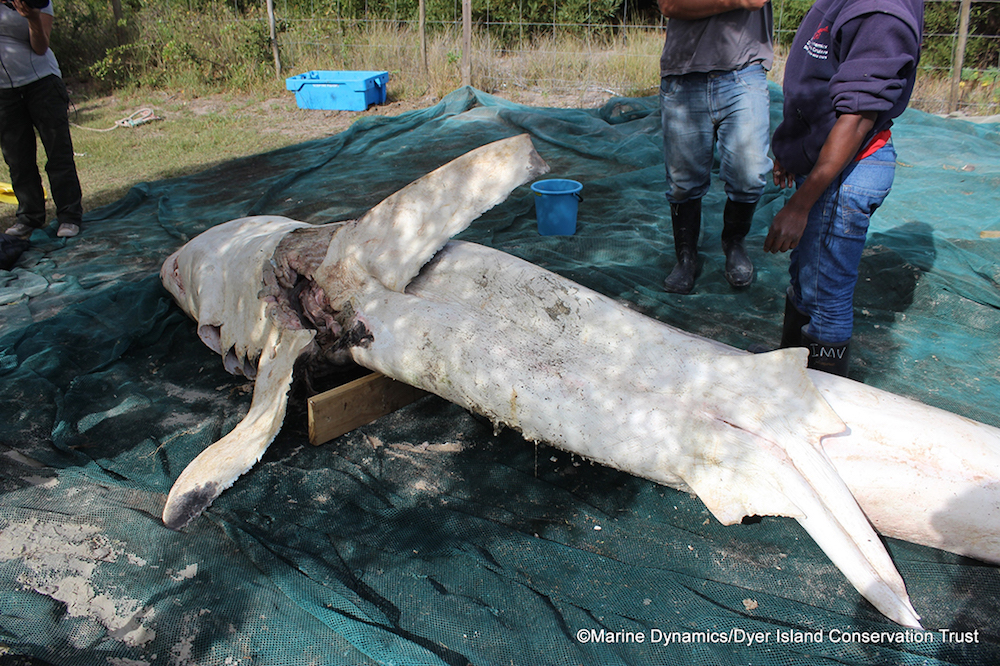
When three great white sharks mysteriously washed ashore along the coast of South Africa, researchers weren't sure what to think. But after doing necropsies (animal autopsies) on all three sharks, the researchers identified a possible culprit.
All of the sharks were missing their livers, and one was missing its heart. It's likely that an orca, also known as a killer whale, attacked the sharks and ate their organs, the researchers said. [Read the full story on the orca-on-whale attack]
Shark No. 1
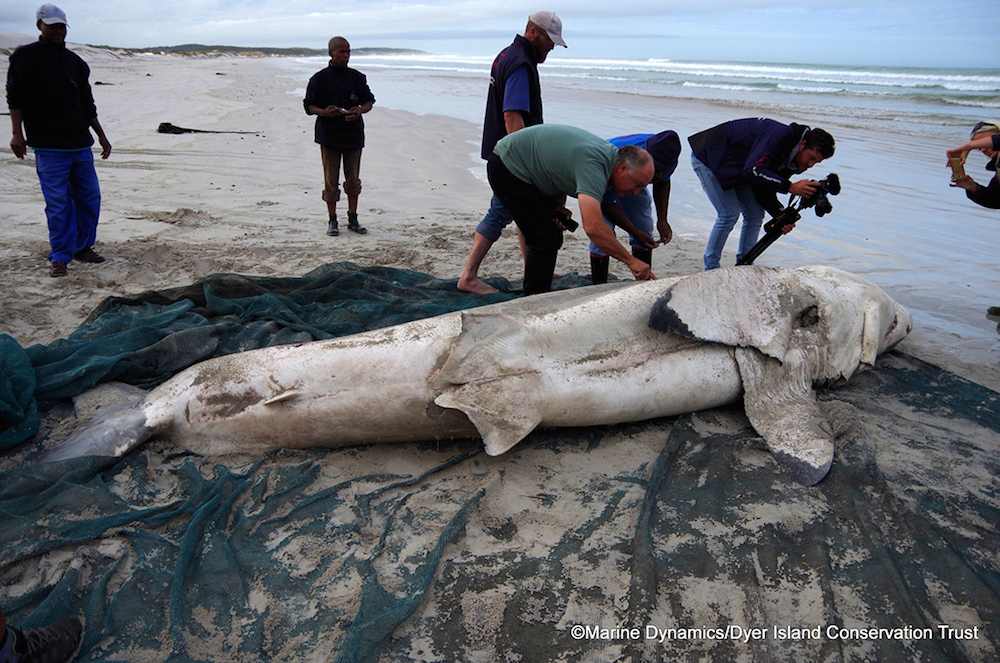
The first dead great white shark (Carcharodon carcharias that washed ashore was a 16-foot-long (4.9 meters) female that weighed more than 2,400 lbs. (1,110 kilograms).
This shark was found in Gansbaai, a town on the South African coast, on May 3, 2017.
Mysterious injuries
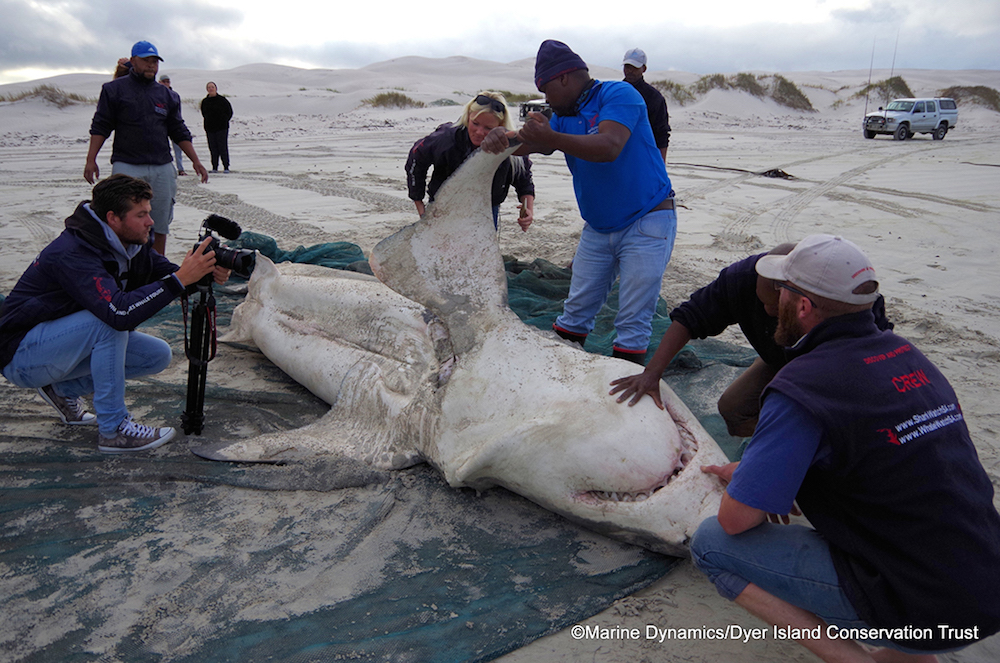
The female shark was missing its liver, the researchers reported.
"There is a gaping wound on the shark's underside, but until we have examined the injuries closely, we cannot confirm if her death is indeed orca-related or not," the researchers said in a blog post on the website of Marine Dynamics, a shark cage diving company in South Africa.
Gaping hole
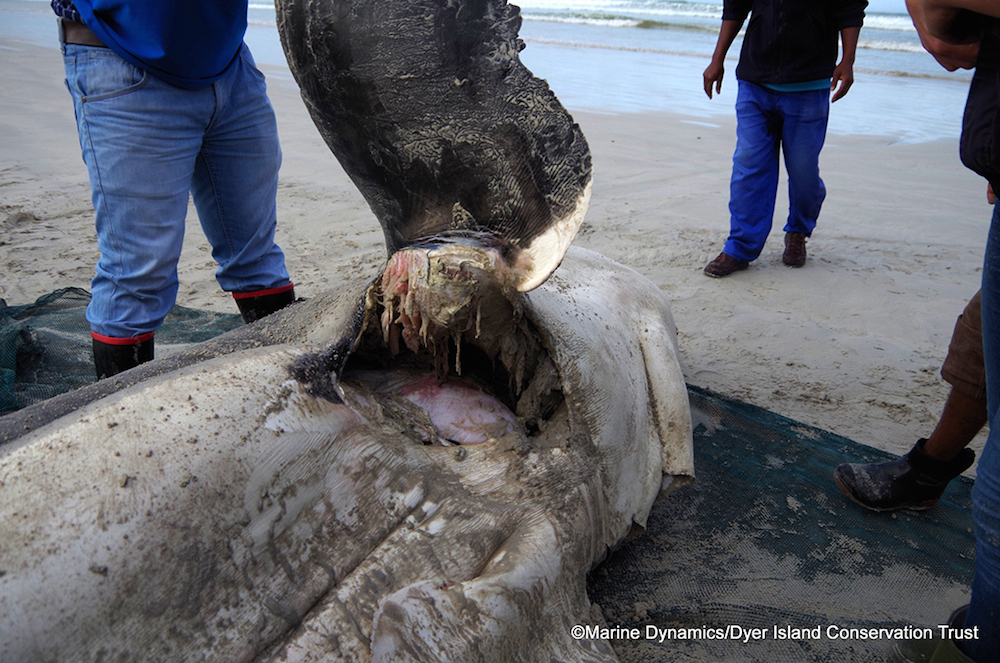
The female shark had a number of injuries.
Before the shark's death, the last time people reported seeing her was in June 2016, by Dyer Island. "But we haven't seen her since," the researchers said in the blog post.
The second shark, an 11-foot-long (3.4 m) male shark, was also found along the shore in Franskraal, a village on the South African coast. This shark was missing both its heart and its liver. It was found on May 4, 2017.
Shark No. 3

The third shark that washed ashore was a 15-foot-long (4.5 m) male shark. It was found on May 5, 2017, in Struisbaai, South Africa.
The shark had an open wound under its left pectoral, which exposed its inner body cavity. As with the other sharks, its liver was missing.
The contents of the shark's stomach included the remnants of a Cape fur seal and shark vertebrae. It also had the tip of a stingray barb embedded in its jaw, the researchers said in the blog.
Detailed necropsy
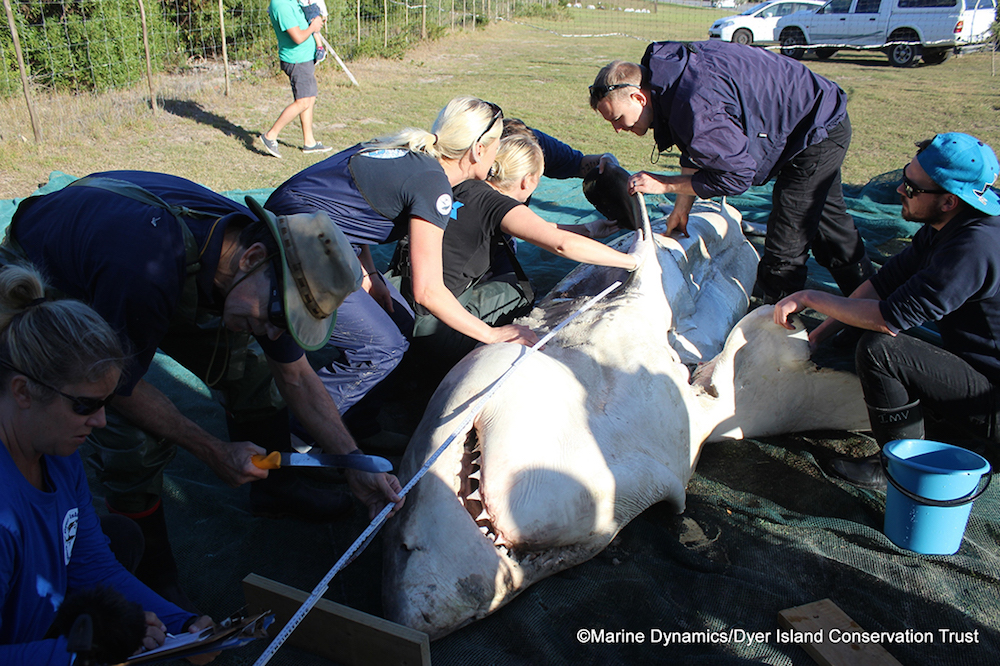
Researchers performed a necropsy on all three sharks, including the female shark, pictured here.
Other marine mammals, such as sea lions, are known to eat the livers and other internal organs of other sharks, such as the leopard shark (Triakis semifasciata), said Andrew Nosal, an assistant professor of biological sciences at Saint Katherine College in San Marcos, California, and a visiting assistant researcher at Scripps Institution of Oceanography in San Diego.
Detective work
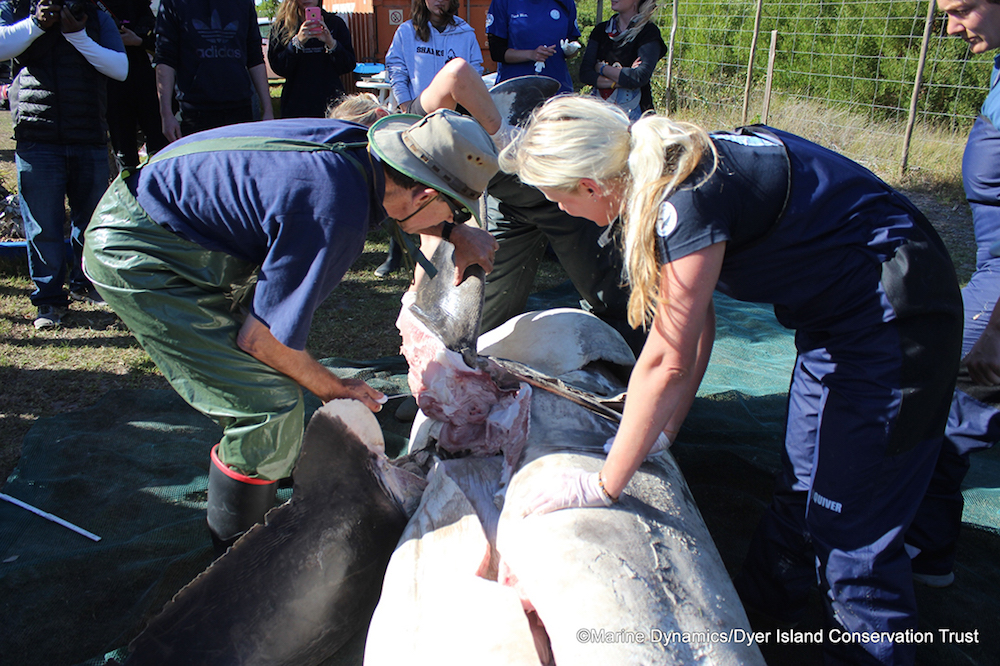
The sharks' injuries, including those to the female shark pictured here, indicate that an orca attacked them and ate their livers.
Orca whales are known to eat the livers of other sharks, including the broadnose sevengill shark (Notorynchus cepedianus), said Chris Lowe, director of The Shark Lab at California State University, Long Beach. The liver is often a choice meal because it is a nutrient- and fat-filled organ, Lowe said.
[Read the full story on the orca-on-whale attack]
Sign up for the Live Science daily newsletter now
Get the world’s most fascinating discoveries delivered straight to your inbox.

Laura is the archaeology and Life's Little Mysteries editor at Live Science. She also reports on general science, including paleontology. Her work has appeared in The New York Times, Scholastic, Popular Science and Spectrum, a site on autism research. She has won multiple awards from the Society of Professional Journalists and the Washington Newspaper Publishers Association for her reporting at a weekly newspaper near Seattle. Laura holds a bachelor's degree in English literature and psychology from Washington University in St. Louis and a master's degree in science writing from NYU.









